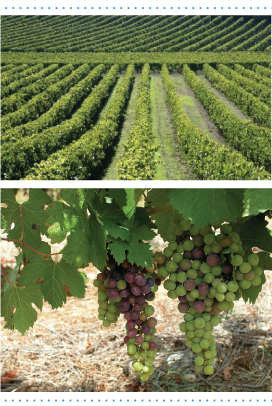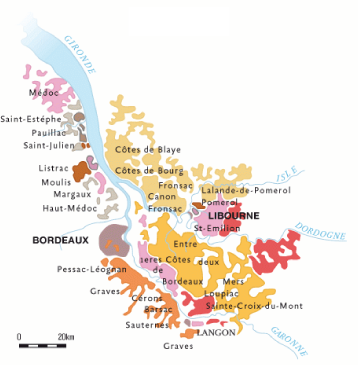|

Content Contributed by Kimberly Bricker, Imperial Beverage
Do you ever hear about a bottle of wine selling for $3,000 and wonder what makes it so special? While part of the answer is subjective, another answer is the 1855 Classification of Bordeaux.
Paris was preparing to host the World’s Fair in 1855. London had established their international supremacy by their World's Exhibition of 1851, which featured the Crystal Palace (or glass house). France and England have a long storied past of being at odds with a constant competitive energy between them. The wine industry of Spain and Portugal, in its entirety (at the time), was created by the British who, at various times throughout history, didn’t want to buy wine from the French. Napoleon III was determined to show England the supremacy of France and spent approximately five million dollars to that end. Wine has always been one of the great achievements France has contributed to the world. Napoleon III thought it would be a good idea to create an official classification of the world’s best wines. The Chamber of Commerce of Bordeaux was given the daunting task to rate the chateaus of Bordeaux. They decided to have the local wine merchants create this political minefield of a list instead. The ranking of each chateau was done entirely upon the prices their wine fetched. While this can vaguely be interpreted to be a verdict on their quality it is important to remember it was on price alone that these chateaus were ranked. After a brief two weeks the local merchants produced a list of 58 chateaus- including 4 first growths, 12 second growths, 14 third growths, 11 fourth growths, and 17 fifth growths. In 1973, after much campaigning, Mouton-Rothschild was promoted from a second growth to a first growth. This is the only change made to the classification since its inception. There are currently 61 classified chateaus due to divisions of property over the years. odds with a constant competitive energy between them. The wine industry of Spain and Portugal, in its entirety (at the time), was created by the British who, at various times throughout history, didn’t want to buy wine from the French. Napoleon III was determined to show England the supremacy of France and spent approximately five million dollars to that end. Wine has always been one of the great achievements France has contributed to the world. Napoleon III thought it would be a good idea to create an official classification of the world’s best wines. The Chamber of Commerce of Bordeaux was given the daunting task to rate the chateaus of Bordeaux. They decided to have the local wine merchants create this political minefield of a list instead. The ranking of each chateau was done entirely upon the prices their wine fetched. While this can vaguely be interpreted to be a verdict on their quality it is important to remember it was on price alone that these chateaus were ranked. After a brief two weeks the local merchants produced a list of 58 chateaus- including 4 first growths, 12 second growths, 14 third growths, 11 fourth growths, and 17 fifth growths. In 1973, after much campaigning, Mouton-Rothschild was promoted from a second growth to a first growth. This is the only change made to the classification since its inception. There are currently 61 classified chateaus due to divisions of property over the years.
Of note is that this system ranks the Chateaux rather than the land. Over time some chateaus have grown significantly in land size. Some chateaus have various plots of land that are not even contiguous. Many chateaus have been divided, or held split ownership, due to Napoleons Law of Succession. (This eliminated primogeniture, or the policy of the oldest son inheriting everything upon the death of his father, and decreed that all assets be divided equally among the children.) Some first growths have taken over lesser growths, gained their land, and thus all the wine produced is labeled as a first growth. The newer land is also typically used to create a ‘second label’ wine that represents the high quality of the chateaux but not quite the best it has to offer. Presently the classified wines of Bordeaux represent such large sums of money that they are rarely held in private ownership. Most of these prestigious grand chateaus are owned by large corporations.
While much has changed since 1855, the classification remains the same. These wines were, and remain, benchmarks for the heights wine can reach. You never forget the powerful and mysterious taste of your first 1st growth even if the current prices ensure that few will have the opportunity.

Recommended Further Reading
Because this topic is so broad, and detail on each of the 60+ classified chateaux locations would be severely cumbersome, Raising the Bar has provided the following links. For more reading on the topic of Classifications of Bordeaux, be sure to visit these sites:
Jancis Robinson >
Analysis of wine price change and reevaluation/reclassification >
Reflections of Clive Coates MW >
Berry Brothers and Rudd on the 1855 Classification >
Revised classification based on current prices >
Map of Bordeaux >
Charts, Bordeaux Growth Classifications >
|
